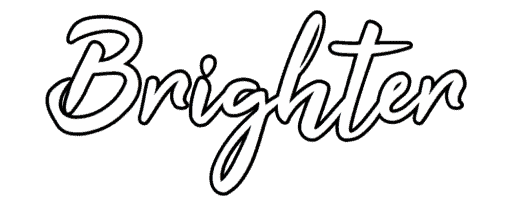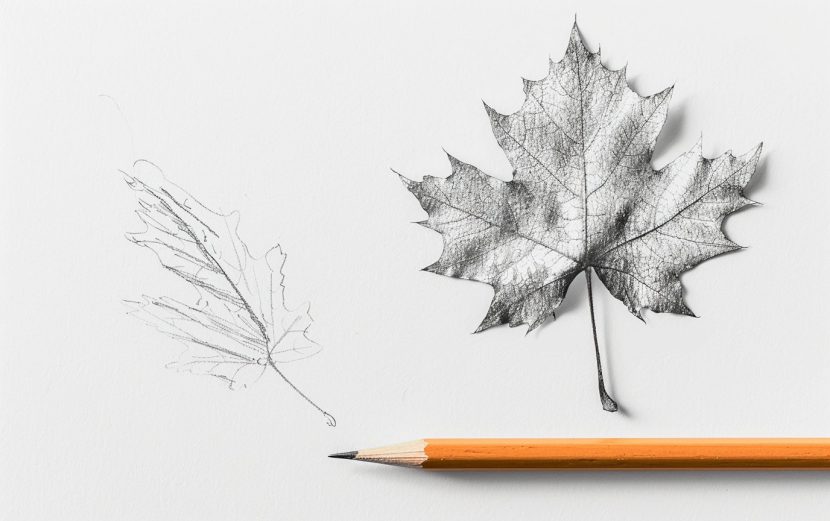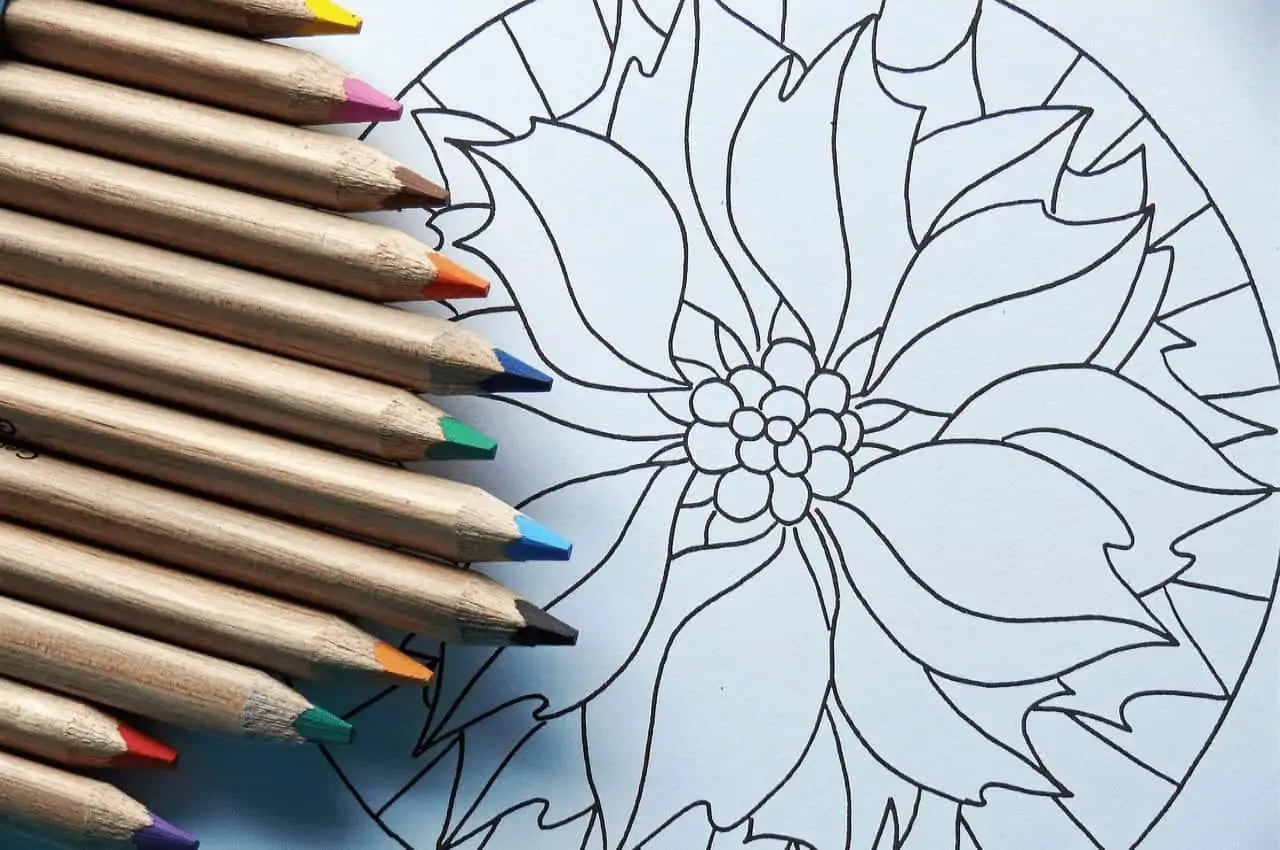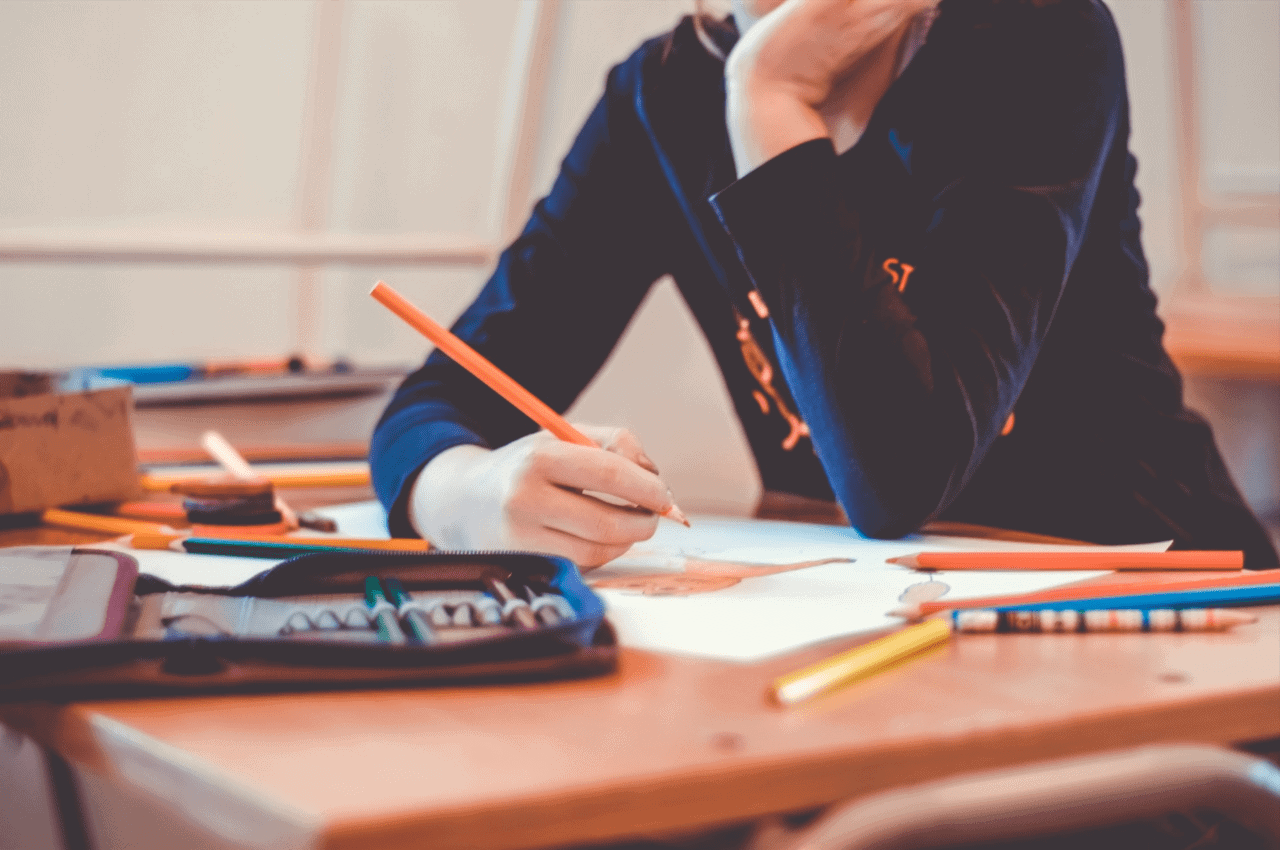Embrace the beauty of autumn by filling your sketchbook with seasonal charm! This list of 20 fun and easy things to draw for a fall sketchbook is perfect for artists of all skill levels looking to capture the cozy spirit of fall. From falling leaves and pumpkins to warm mugs of cider and woodland creatures, these ideas are simple yet full of autumn magic. So grab your pencils and dive into the colors and textures of the season with these creative drawing ideas!
All artwork provided is original and can be used as a reference for your own drawings.
Table of Contents
Woven Basket
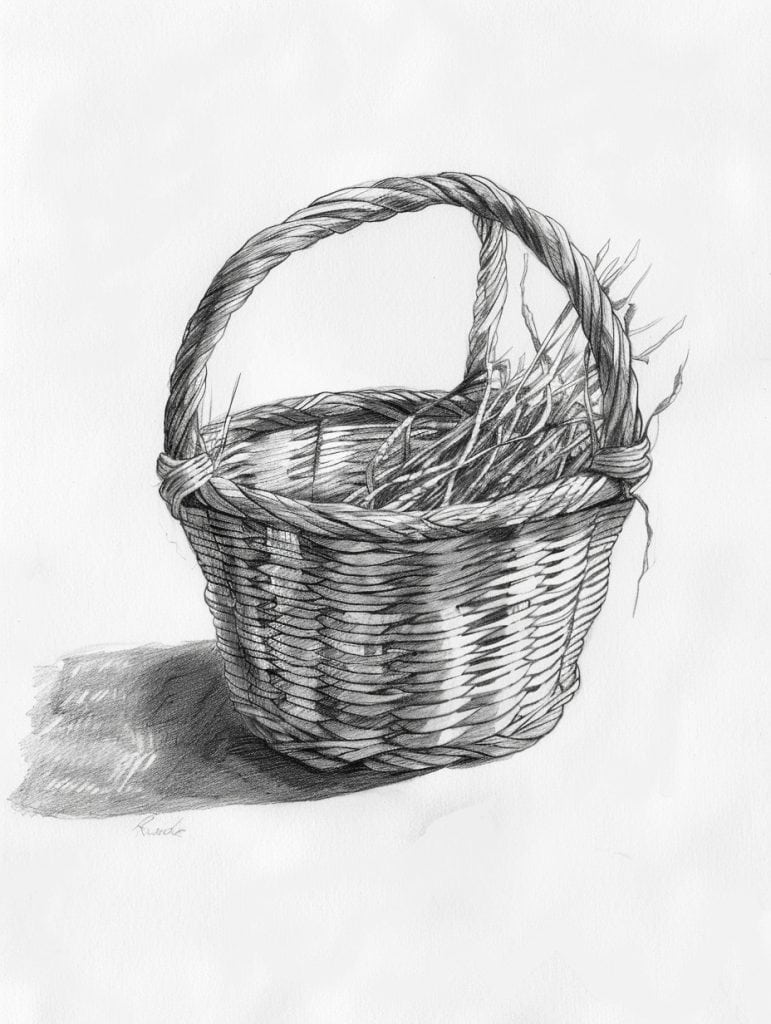
The negative space in this drawing plays a crucial role in defining the basket’s form and creating a sense of lightness. Notice how the white background around the handle emphasizes its curved shape, making it stand out clearly. This contrast between the detailed basket and the empty space gives the drawing depth and dimensionality.
Looking at the interior of the basket, you can see how leaving some areas untouched allows the straw or grass inside to seem more organic and loose. It’s a great technique for suggesting texture without overworking the drawing. The shadow beneath the basket is also cleverly done – just enough shading to ground the object, but still maintaining that airy quality. I’m particularly impressed by how the artist captured the woven texture while still keeping large areas of white to balance the composition.
Post Wrapped In Ivy
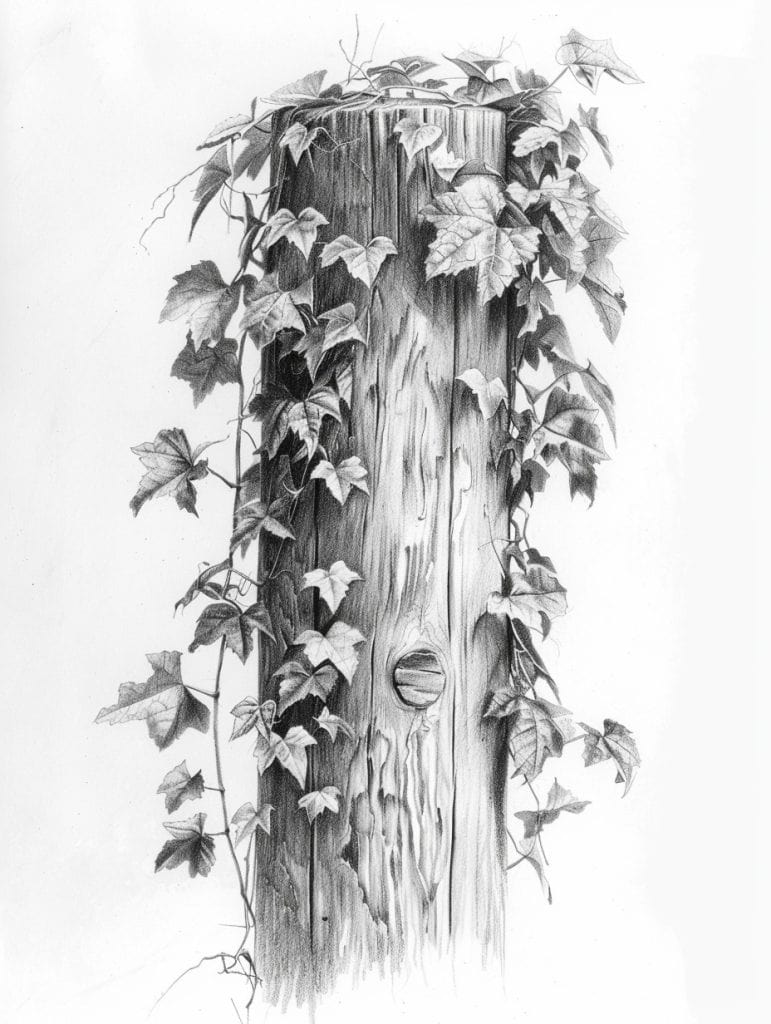
The intricate detail in the ivy leaves really stands out in this piece. The artist has captured the distinctive shape and veining of each leaf, giving them a lifelike quality that adds depth to the overall composition. You can almost feel the delicate texture of the foliage as it clings to the wooden post.
The wood grain texture on the post itself is another area where the attention to detail shines through. The subtle variations in tone and the fine lines create a convincing representation of weathered wood. That small knot near the bottom is a nice touch – it adds character and realism to the structure. As a fellow artist, I’m impressed by the patience it must have taken to render all those minute details so precisely in pencil.
Rain Droplets Rolling On Window
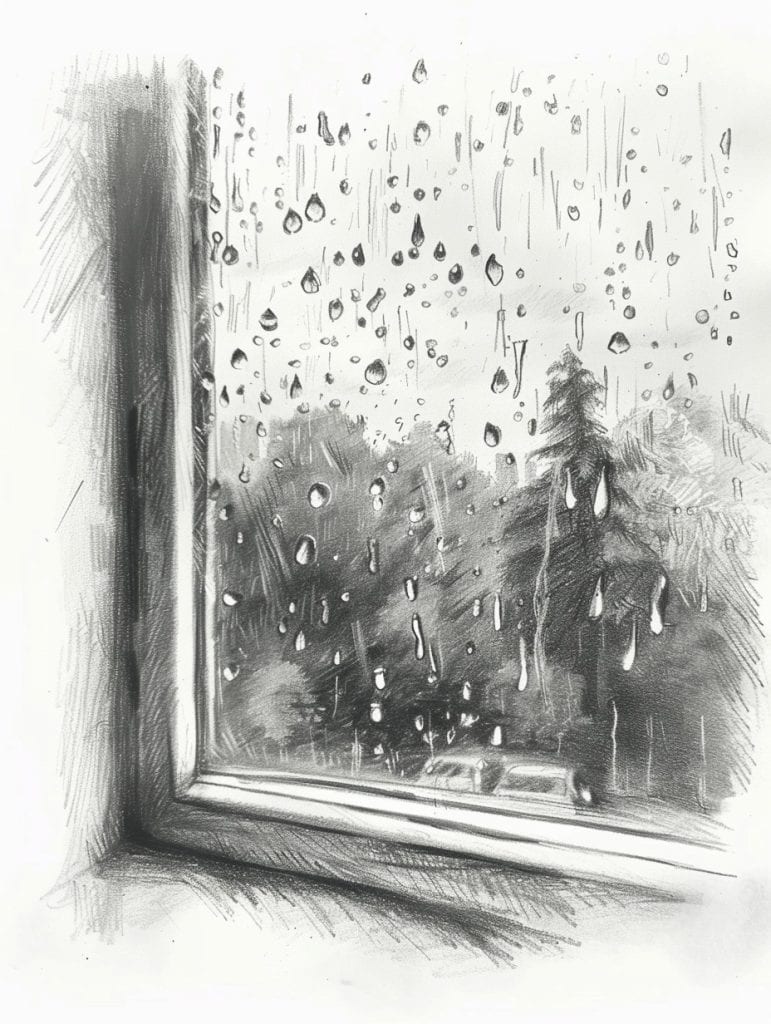
This pencil drawing of a rainy window scene already has a lot of beautiful texture, especially in the water droplets and the foliage outside. The artist has done a great job capturing the atmosphere with varied mark-making.
To add even more texture, I’d suggest experimenting with some subtle cross-hatching in the darker areas, particularly in the corners of the window frame and the shadowy parts of the trees. This technique can create depth and a sense of roughness that contrasts nicely with the smooth, wet appearance of the raindrops. Another option would be to use a kneaded eraser to lift out some highlights in the foliage, creating a dappled light effect that mimics how rain can make leaves glisten.
Weathered Barn Door
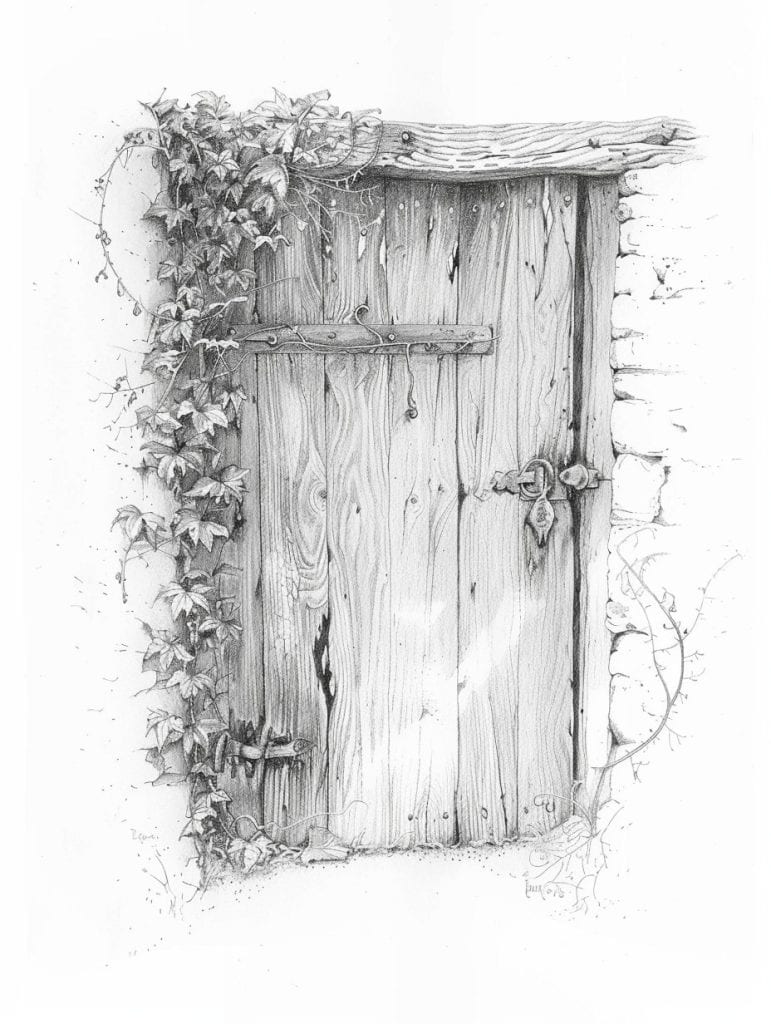
The current head-on perspective of this rustic door creates a strong sense of symmetry and frontality. It’s an effective choice for showcasing the weathered wood textures and intricate details like the door handle and hinges. However, shifting to a slight angle could add more depth and dimensionality to the scene.
Imagine viewing this door from about 30 degrees to the left or right. You’d start to see the edge of the door frame, giving a better sense of its thickness and how it’s set into the wall. The ivy would cascade more dynamically across the facade. This angled view could make the composition feel less static, drawing the viewer’s eye along diagonal lines rather than straight verticals.
Another interesting option would be a extreme close-up on just a portion of the door – perhaps focusing on where the ivy meets the weathered wood. This zoomed-in perspective could create a more abstract, textural study that really highlights the interplay between nature and the man-made structure. It’s all about what story you want to tell with your drawing.
Vintage Lantern
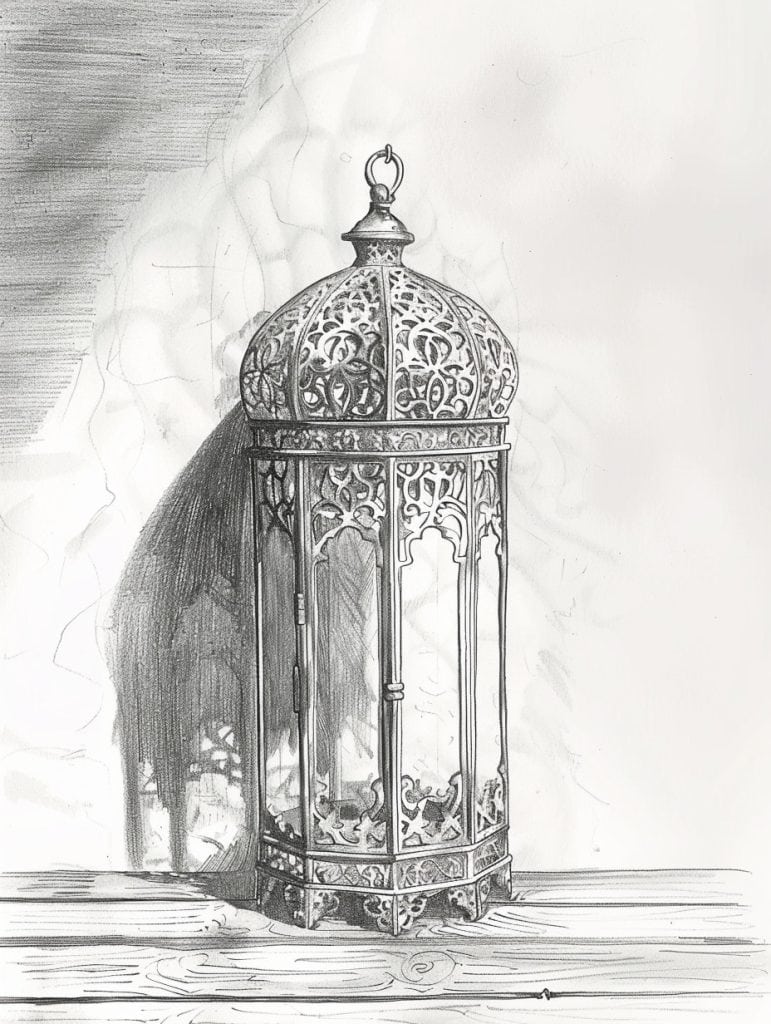
The artist’s use of contrast in this lantern sketch is really striking. They’ve created depth and dimension through strong light and shadow play. Look at how the intricate filigree design pops against the darker recesses – that level of detail gives the piece its ornate, delicate feel. The heavy shadowing on the left side contrasts beautifully with the lighter tones on the right, emphasizing the lantern’s rounded form.
I’m impressed by the subtle gradations in shading throughout. The wood grain of the surface the lantern sits on has just enough texture to ground the piece without distracting from the main subject. And that soft background shading? It creates a sense of atmosphere that makes the lantern feel three-dimensional. The artist clearly has a good grasp on how to use varying pressure and strokes to achieve different effects.
If I were giving advice to recreate this, I’d suggest starting with light outlines to nail down the proportions. Then build up the darkest shadows gradually – it’s easier to darken areas than to lighten them later. Pay close attention to how the light interacts with all those intricate cutouts. That interplay of light and shadow is what really brings this sketch to life.
Hot Cocoa With Marshmallows
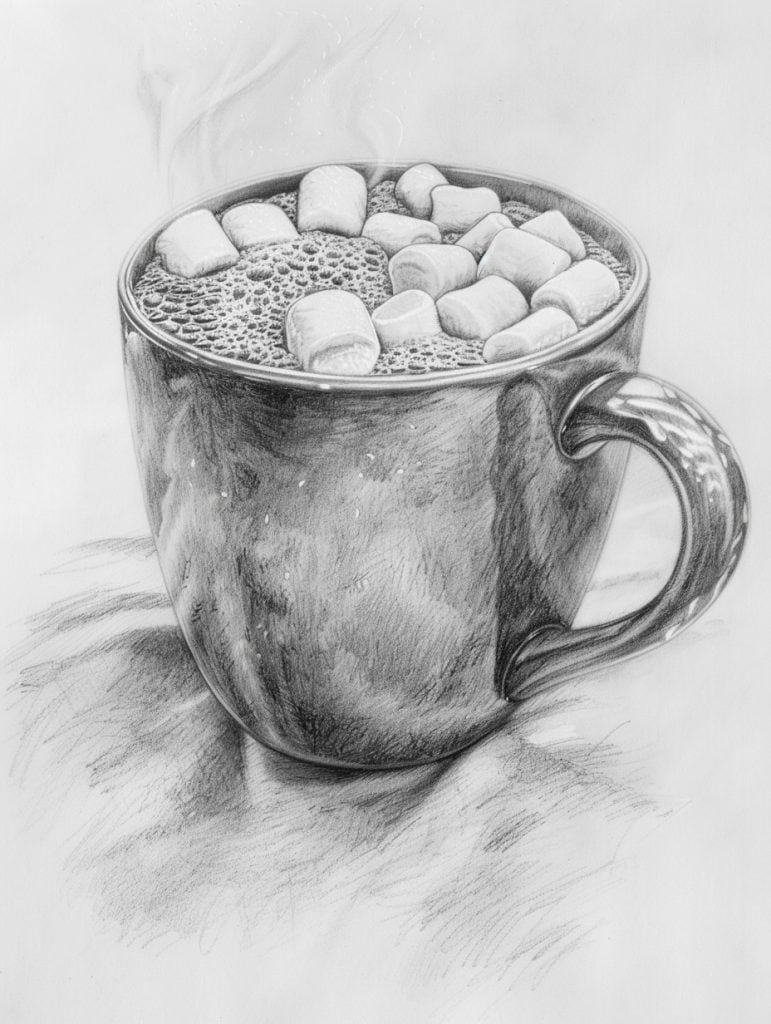
This pencil sketch of a mug filled with hot cocoa and marshmallows is beautifully rendered, but it could use a bit more energy. To make it more dynamic, consider adding some rising steam swirls above the cup. These curved, wispy lines would create a sense of warmth and movement, drawing the eye upward.
Another approach would be to play with the marshmallows’ positioning. Instead of having them all neatly floating, you could show one or two mid-plop into the cocoa, creating tiny splashes. This would capture a moment of action and add visual interest. You might also experiment with the mug’s angle – tilting it slightly could create tension and make the composition feel less static.
Lastly, don’t be afraid to push your values further. Deepening the shadows, especially under the mug and in the liquid, would enhance the three-dimensional quality and make the image pop. Remember, contrast is your friend when you want to breathe life into a still subject.
Stack Of Books
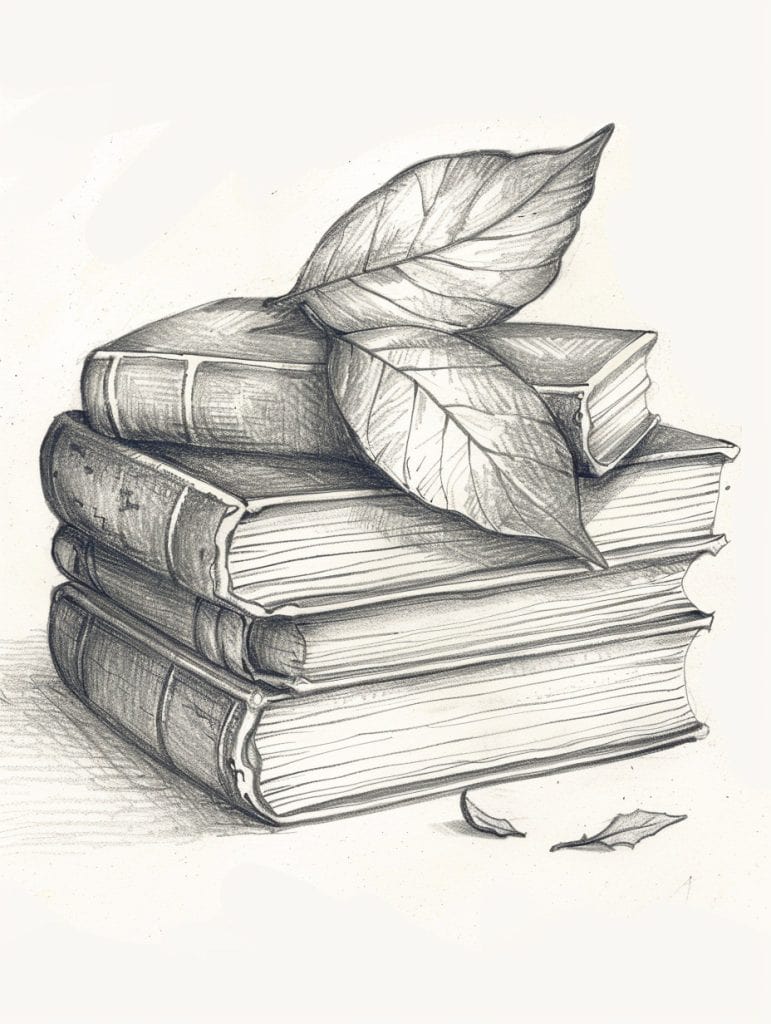
This pencil sketch of stacked books and leaves has a lovely sense of texture and depth. To adapt it into a different medium, I’d consider a relief print like linocut or woodblock. The crisp lines and distinct textures would translate beautifully to a print medium, allowing you to play with the contrast between the smooth book spines and the intricate leaf veins.
For a more dramatic transformation, you could reimagine this as a sculptural piece. Picture carving the books from wood, with real pressed leaves incorporated. Or go abstract – create a large-scale painting that zooms in on just the interplay between a leaf’s edge and a book’s pages. The original sketch has such nice detailing that you could really expand on any small element.
Personally, I’m drawn to the idea of a mixed media collage. You could combine actual book pages, pressed leaves, and sketched elements to create a piece with literal and figurative layers. Whatever direction you choose, maintain that beautiful attention to texture that makes the original sketch so captivating.
Pie On A Rustic Plate
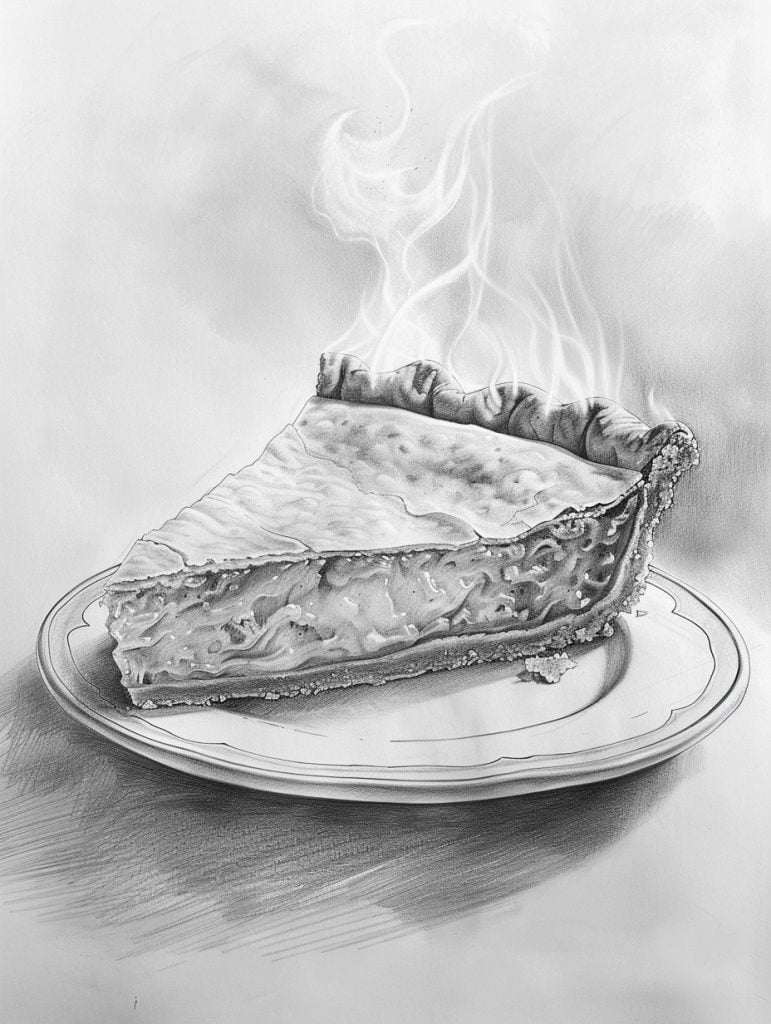
The repetition in this drawing is subtle but effective, especially in the pie’s crust. Notice how the artist has used short, curved strokes to create a flaky texture along the edge. This pattern continues throughout the crust, giving it a consistent and appetizing appearance. The same technique is applied to the filling, where repeated wavy lines suggest the layers and texture of what looks like an apple pie.
There’s also a beautiful pattern in the steam rising from the pie. The artist has used flowing, curving lines that intertwine and repeat, creating an almost hypnotic effect. It’s a great way to suggest movement and heat. The plate itself shows a repeating scalloped edge, which adds a nice decorative touch without overwhelming the main subject. As you practice, try incorporating these kinds of subtle repetitions – they can really bring a drawing to life without making it feel too rigid or mechanical.
Detailed Maple Leaf

The intricate veining of the maple leaf immediately catches my eye. The artist has done an excellent job capturing the delicate network of lines that give the leaf its distinctive structure and character. It’s clear they spent time studying the organic patterns and translating them skillfully onto paper.
The shading technique also stands out to me. There’s a subtle gradation from lighter tones near the stem to slightly darker areas towards the leaf’s edges. This gives the drawing a sense of depth and dimensionality that can be tricky for beginners to achieve. If you’re working on a similar piece, I’d suggest practicing your pressure control to create those soft variations in tone.
As for composition, the placement of the leaf is spot-on. It’s centered but with a slight tilt that adds visual interest and prevents the drawing from feeling too static. The stem curving gently at the bottom is a nice touch – it grounds the image and leads the eye upward into the body of the leaf.
Scarecrow’s Head
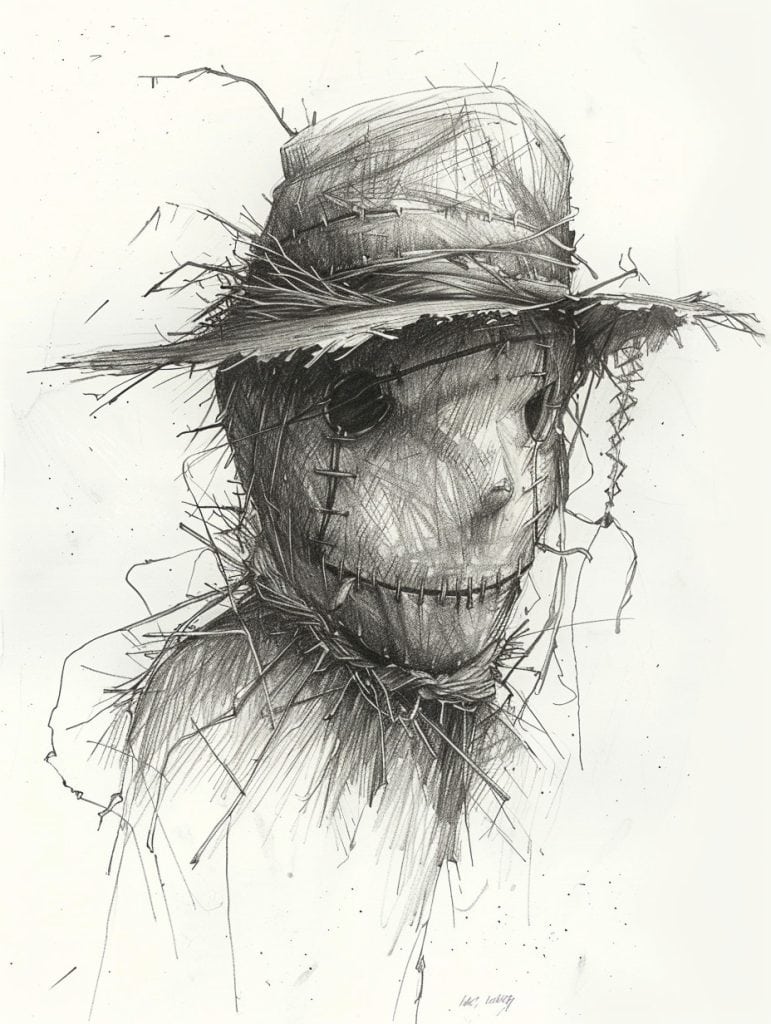
If I were sketching this quickly, I’d start with the hat’s distinctive silhouette. That ragged, straw-like brim really defines the character’s eerie look. I’d rough out the basic hat shape, then move to the skull beneath – those empty eye sockets and stitched-up mouth are key focal points that give the piece its unsettling vibe.
For a speed sketch, I’d focus on capturing the overall mood through loose, sketchy lines rather than worrying about perfect details. The stray wisps of straw and tattered fabric create great texture, so I’d use quick, scratchy strokes to suggest those without drawing each individual piece. The shading is pretty dramatic too – laying in those deep shadows early would help nail down the three-dimensional form and creepy atmosphere.
Spiderweb On Window
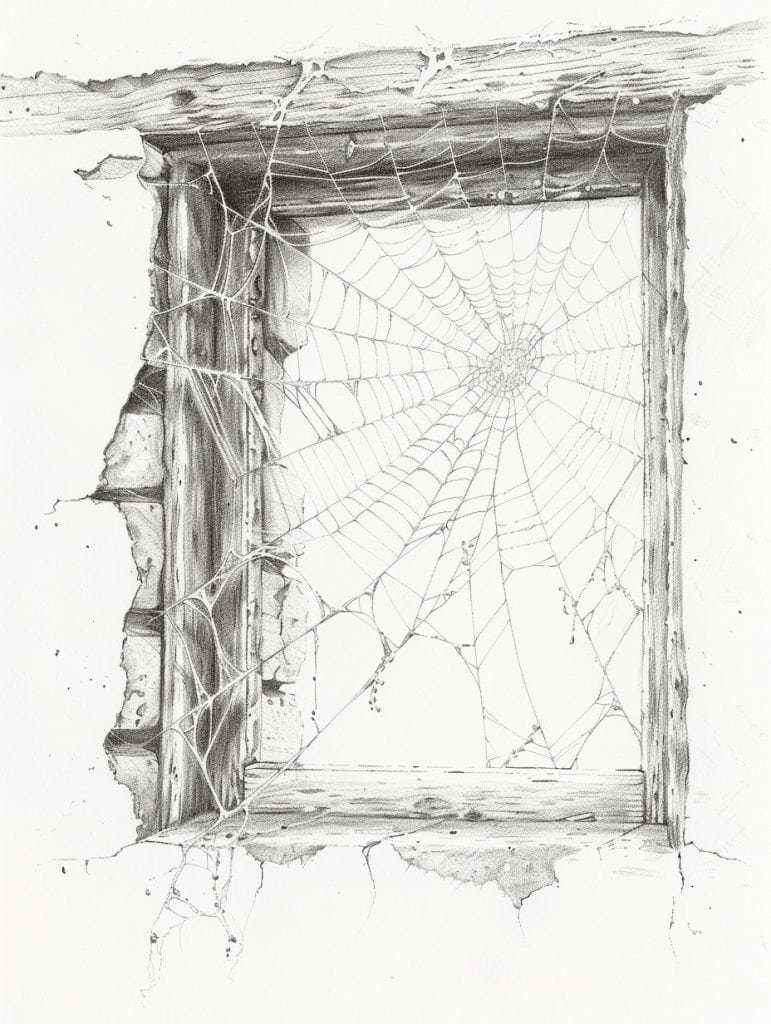
This drawing showcases a masterful use of negative space to create a striking spider web. The artist has left the web itself largely untouched, using the white of the paper to form its delicate structure against the darker shading of the window frame. It’s a technique that requires careful planning and execution – you have to visualize where not to draw as much as where to apply your pencil.
The texturing on the weathered wood frame is another standout element. Notice how the artist varies the pressure and direction of their strokes to capture the grain and rough surfaces. The crumbling plaster around the edges adds to the sense of decay. I’m particularly impressed by the subtle shadows cast by the web strands on the frame – it’s those small details that really bring a drawing to life and show the artist’s keen eye for observation.
Paper Bag Filled With Apples
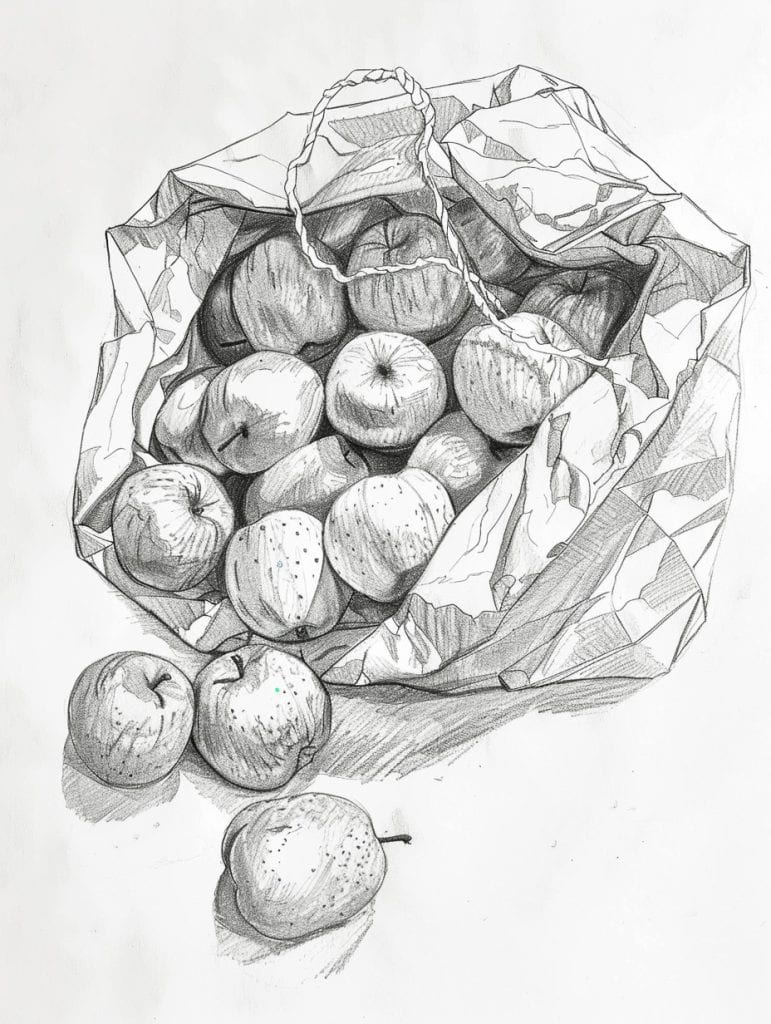
The shading and textures in this still life would be quite challenging for a beginner. Getting the subtle variations in tone across the apples’ rounded surfaces takes a lot of practice. You really have to train your eye to see those gradual shifts in light and shadow. The crinkled paper bag adds another layer of complexity – capturing all those folds and creases convincingly is no easy task.
I’d say the composition itself is also tricky. There’s a delicate balance between the loosely gathered bag and the more structured forms of the fruit. Beginners often struggle with arranging elements in a way that feels natural yet visually interesting. The way some apples are peeking out or have fallen from the bag creates nice depth, but achieving that casual, unposed look is harder than it seems.
From personal experience, I know patience is key with a detailed piece like this. It’s tempting to rush through, but taking the time to really observe and render each element pays off. Don’t get discouraged if your first attempts don’t match the original – this level of realism comes with lots of practice!
Rain Boots With Puddle Reflections
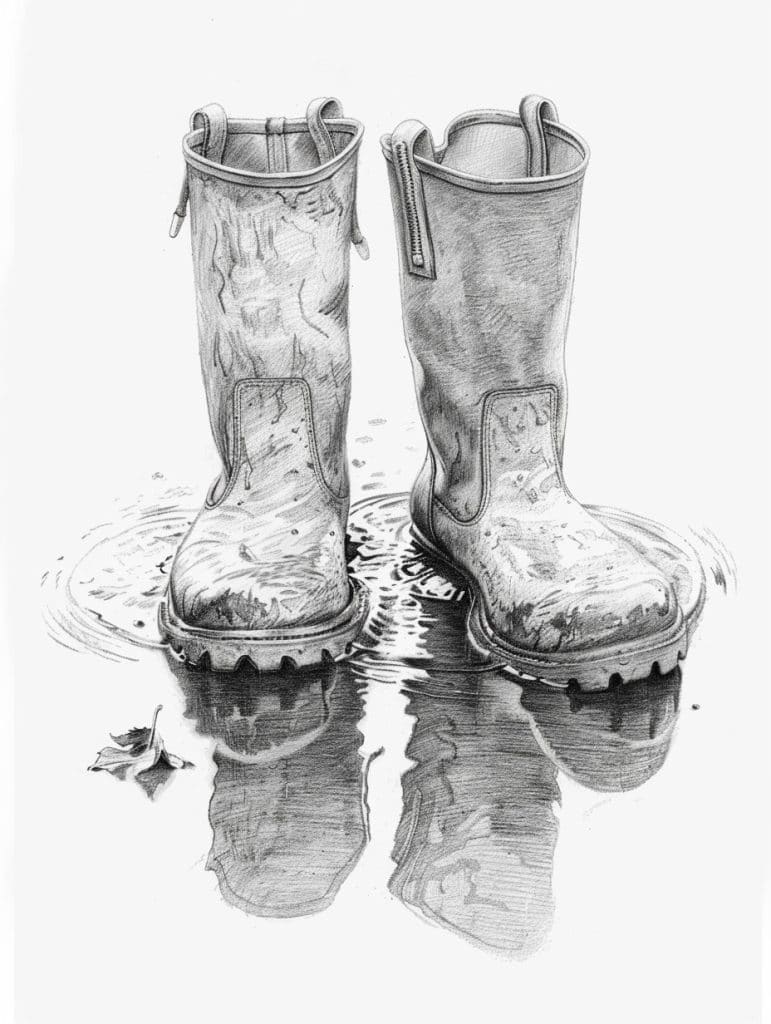
Those boots have such wonderful texture and detail. For a beginner exercise, I’d suggest focusing on just one small section – maybe the toe of one boot or a patch of the weathered leather. Spend 15-20 minutes really studying and sketching just that tiny area. Pay attention to the subtle variations in shading, the cracks and wrinkles in the material. This targeted practice helps train your eye to notice fine details.
For the reflections, try a quick exercise with just simple shapes. Sketch the basic outline of the boots, then add loose, wavy lines underneath to suggest the rippled water. Don’t worry about perfect realism – just capture the essence of the reflections. This trains you to simplify complex elements into their core components. Once you’re comfortable with that, you can gradually add more nuance to make the reflections more lifelike.
Owl In A Hallow Tree Trunk
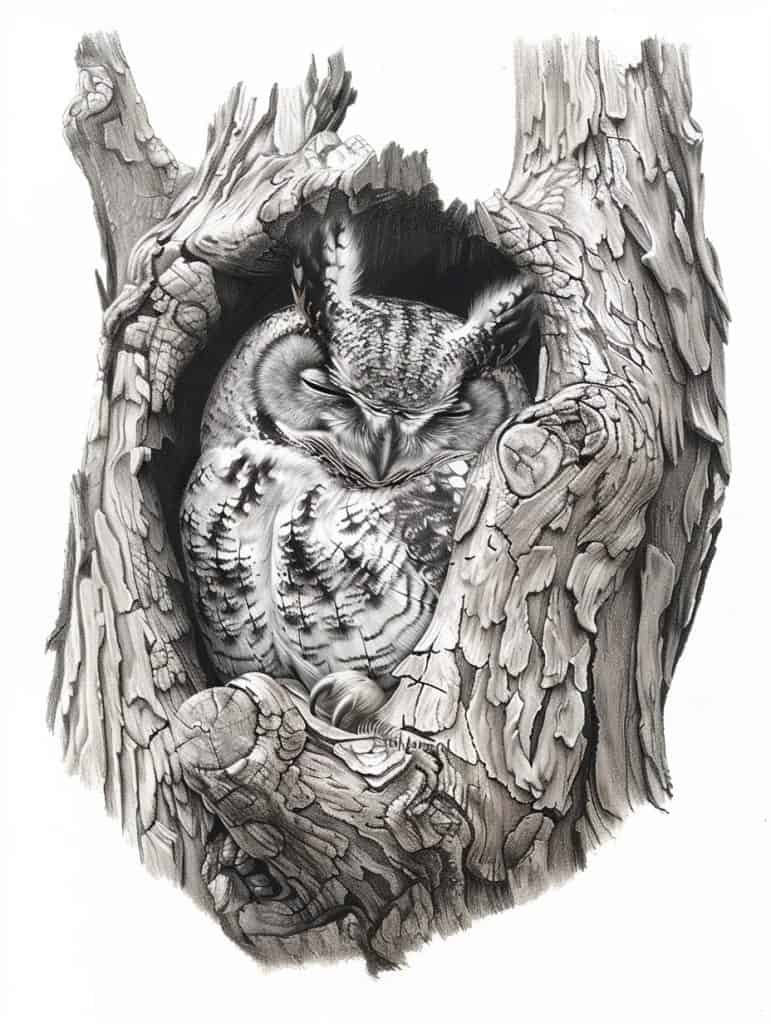
The texture work on this owl drawing is absolutely stunning. The artist has managed to capture the intricate feather patterns and the rough, gnarled bark of the tree with incredible detail. I’m particularly impressed by how they’ve rendered the owl’s plumage – you can almost feel the softness of the feathers. The way the owl’s body blends seamlessly into the tree hollow creates a sense of the bird being one with its environment.
Lighting and shadow play a crucial role in giving this piece depth and dimensionality. Notice how the owl seems to emerge from darkness, with highlights accentuating its facial features and the edges of its wings. This contrast between light and shadow not only adds visual interest but also conveys a sense of mystery and nocturnal ambiance that’s so fitting for an owl. As an artist, mastering this interplay of light and dark can really elevate your work.
Pick Up Filled With Pumpkins
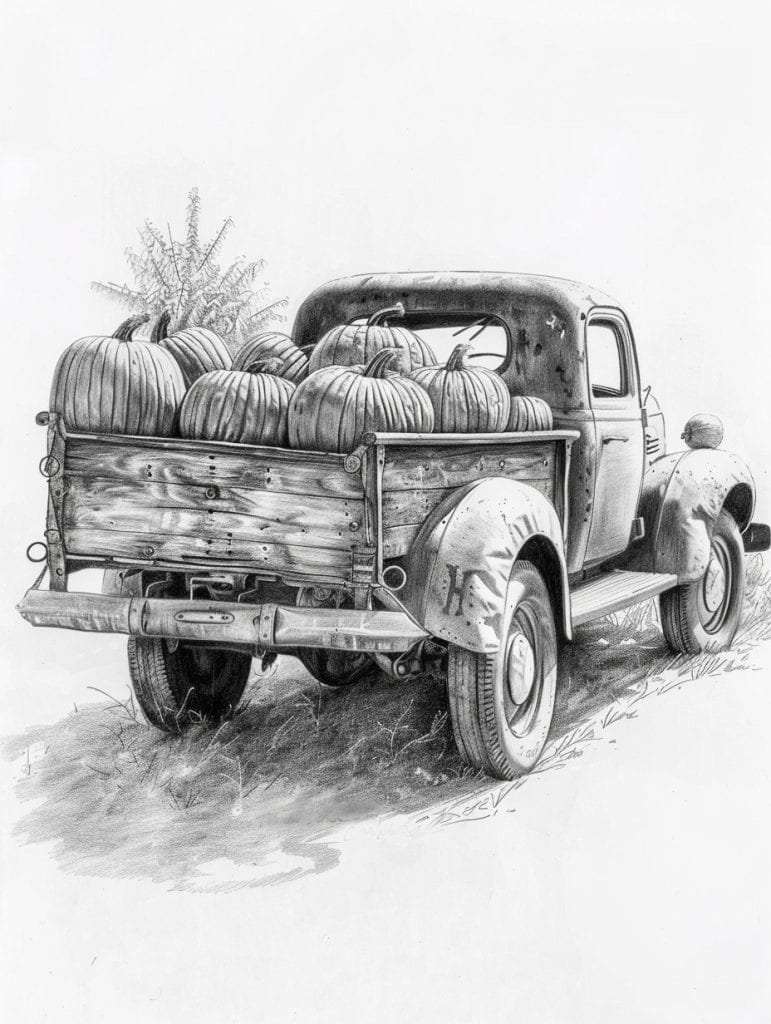
This pencil drawing of a vintage pickup truck loaded with pumpkins is beautifully executed, with impressive attention to detail. The shading and textures really bring out the rustic charm of the old vehicle and its autumnal cargo.
If I were to suggest adding one element to enhance this piece, I’d recommend incorporating some subtle environmental context. Perhaps a few fallen leaves scattered on the ground near the truck’s wheels, or some wispy clouds in the sky above. This would help ground the truck in its surroundings and add a touch of seasonal atmosphere without detracting from the main focus.
Alternatively, playing with lighting could elevate the drawing further. Imagining a low autumn sun casting long shadows could create interesting contrasts and emphasize the three-dimensional quality of the truck and pumpkins. As an artist yourself, you might consider how strategically placed highlights and deeper shadows could bring even more depth to this already impressive sketch.
Mushroom At Tree Base

When tackling a detailed mushroom scene like this, one common pitfall is getting lost in the intricacies and losing sight of the overall composition. It’s tempting to meticulously render every gill and texture, but that can lead to a flat, lifeless drawing. Instead, focus on capturing the essence of the forms and the interplay of light and shadow. Pay attention to how the mushrooms cluster and overlap, creating depth and interest.
Another challenge is balancing the various elements. The tree trunk provides a strong vertical anchor, but it’s easy to let it dominate the piece. Make sure to give equal attention to the forest floor – those fallen leaves and smaller mushrooms add crucial context and atmosphere. And don’t forget about negative space – allowing some areas to breathe can actually enhance the impact of your more detailed sections. Remember, sometimes what you leave out is just as important as what you put in.
Crow On Bare Branch
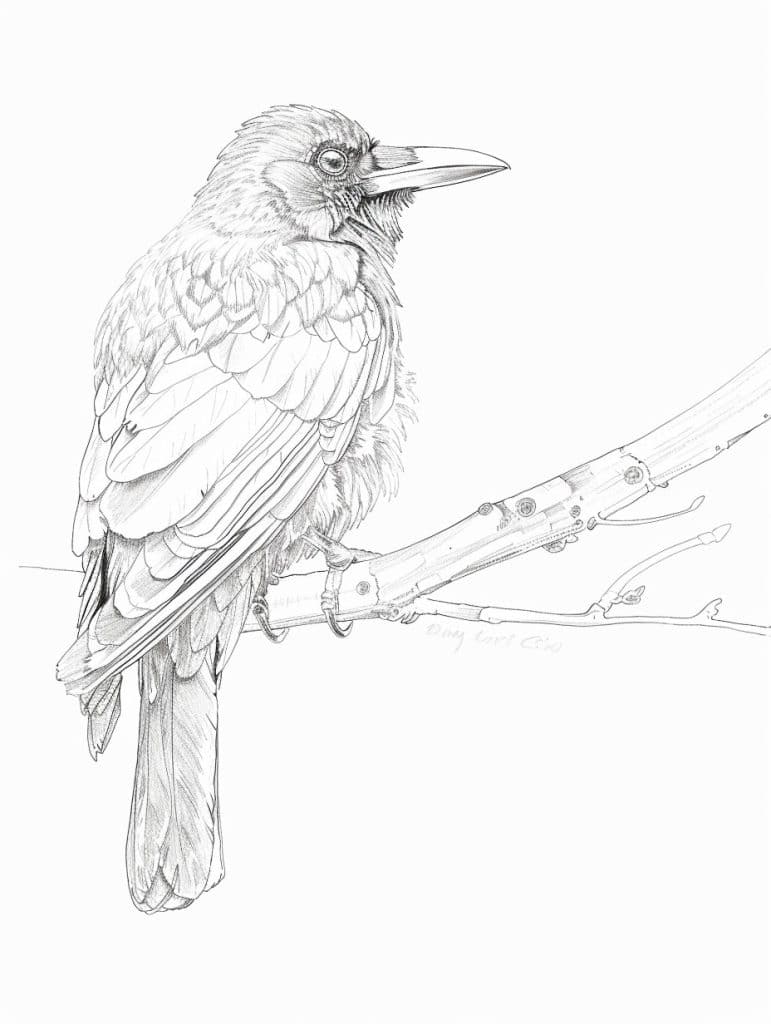
The level of detail in this crow sketch is impressive. For beginners looking to capture this kind of intricate realism, I’d say mastering feather textures is crucial. Notice how the artist has rendered individual feathers with subtle variations in line weight and direction. This creates depth and brings the bird to life.
Shading technique is another vital skill here. The gradual shifts in tone, especially around the eye and beak, give the crow dimensionality. As a beginner, practicing value scales and learning to see subtle gradations of light and shadow will pay off enormously. I remember struggling with this myself when I first started drawing birds.
Lastly, don’t overlook the importance of careful observation. The proportions and positioning of the crow’s features are spot-on, which comes from really studying your subject. Spend time looking at reference photos or, even better, watching live birds to internalize their structure and movements. It’ll make a world of difference in your drawings.
Sweater Draped On Chair
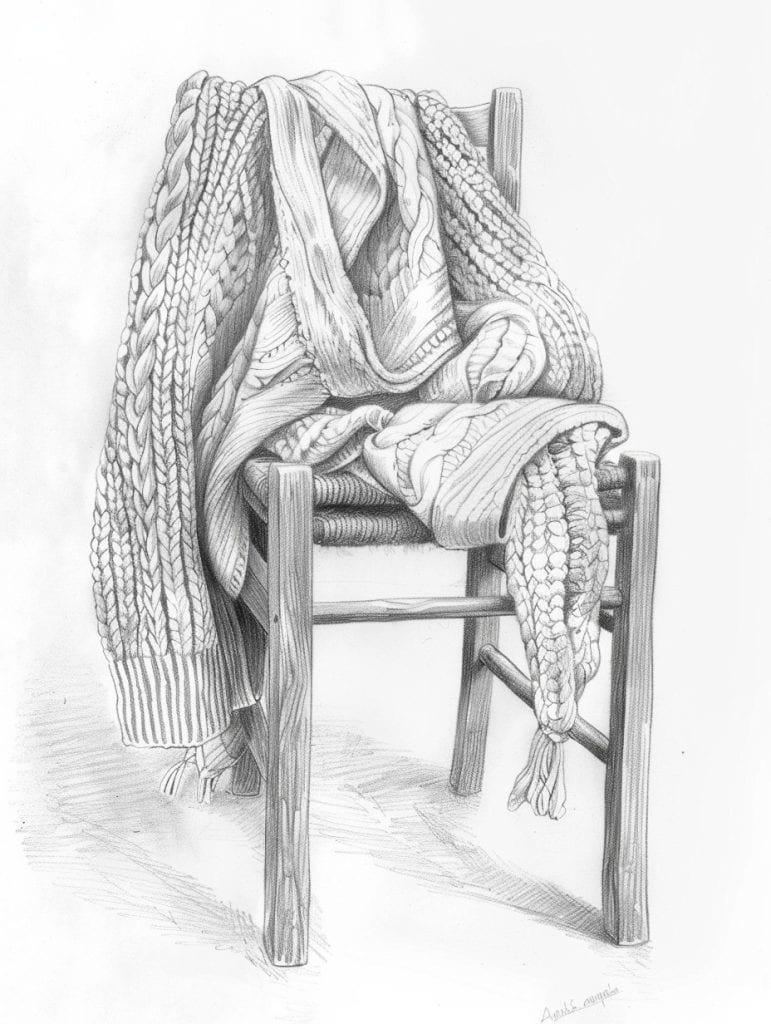
For a beginner, this intricate drawing of knit sweaters draped over a chair could be simplified quite a bit. I’d suggest starting with the basic chair shape – just simple straight lines for the legs and seat. Then focus on the overall silhouette of the sweaters, using loose curved lines to capture their draping form without getting bogged down in details.
The key textures could be suggested with some basic shading and a few strategic lines to hint at the knit patterns. Don’t worry about drawing every single cable and rib – that level of detail can be overwhelming. Instead, maybe pick one small section to add more texture as a focal point. The fringed edges of the sweaters are a nice touch that even a beginner could include with some simple parallel lines.
As for shading, I’d advise keeping it minimal at first. Just use light pencil strokes to give a sense of depth and form. The original artist did a beautiful job with the subtle shadows, but that takes a lot of practice. For now, focus on capturing the essence of the cozy, draped sweaters with simpler shapes and selective details.
Acorns And Pinecons
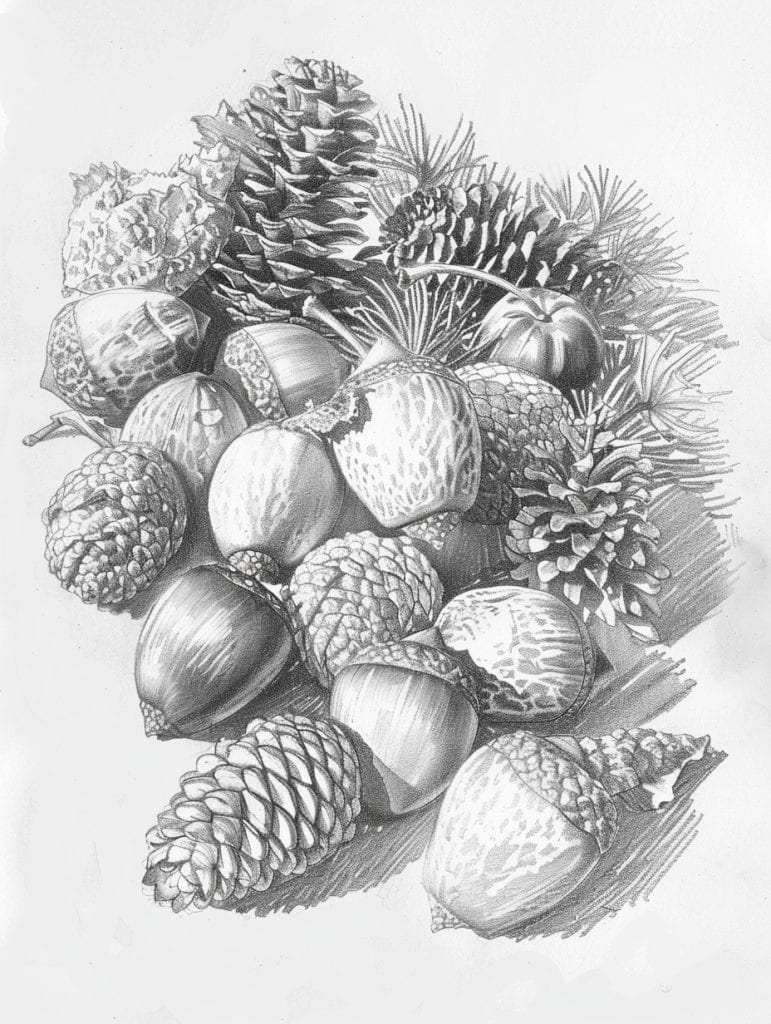
One subtle detail that really elevates this piece is the varied texturing on the acorn caps. Notice how the artist has carefully rendered the intricate patterns and scales, giving each acorn its own unique character. This attention to detail adds depth and visual interest, inviting the viewer to look closer.
The masterful use of shading and highlights on the pinecones is another standout element. The way light and shadow play across the overlapping scales creates a wonderful sense of dimension and realism. It’s not just about drawing what you see – it’s about understanding how light interacts with different surfaces and textures. As you develop your skills, pay close attention to how shadows fall and how highlights can bring out form.
Classic Rocking Chair

For a beginner tackling this sketch, I’d recommend starting with the basic shapes and perspective. Notice how the rocking chair is positioned at an angle on what appears to be a porch or deck. Getting that angle right will set the foundation for the whole piece.
Pay close attention to the negative spaces – the gaps between the chair’s spindles and rungs. These are crucial for capturing the chair’s character and structure accurately. The contrast between the bold, vertical lines of the railing in the background and the more intricate details of the chair creates an interesting visual dynamic.
When it comes to shading, observe how the artist has used varying line weights and densities to create depth and texture. The wood grain on the floor and walls adds richness to the scene. Don’t be afraid to experiment with your pencil pressure to achieve similar effects. And remember, it’s okay if your first attempt isn’t perfect – drawing is all about practice and observation.
These 20 fun and easy fall drawing ideas will bring your sketchbook to life with the warmth of the season. Perfect for all ages, these simple yet charming sketches capture the cozy essence of autumn. So whether you’re drawing solo or with friends, get ready to enjoy a relaxing, creative season filled with fall-inspired art!
